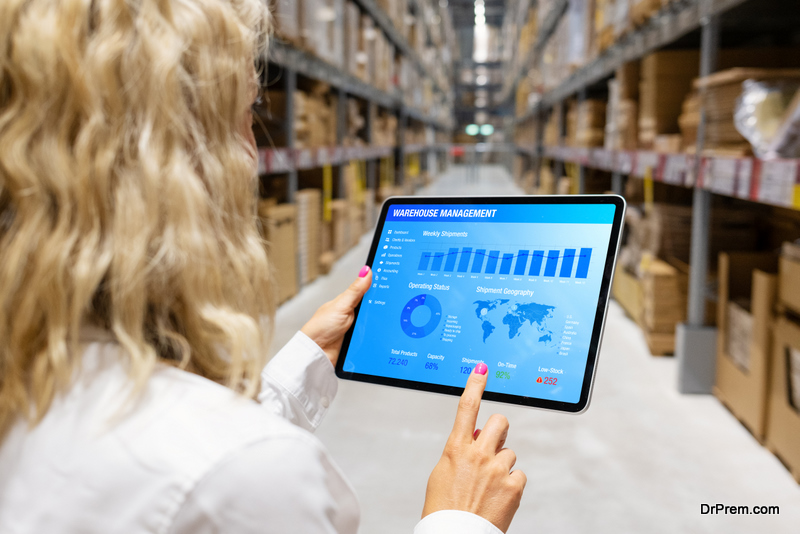It is critical for industry professionals to share information, freight management software, and ideas in order to solve major problems. Collaboration has numerous advantages for businesses and the industry as a whole, including increased output, streamlined processes, faster innovation, and solutions to issues such as low margins and sustainability. Information silos are a common method for business units to conceal information from other departments. When trying to share information with collaborators, there are frequently issues.
According to John Fernie and Leigh Sparks in Retail Logistics: Changes and Challenges, it is critical for the transformation of the retail supply chain to be able to collect, share, and use data across the supply chain and among freight management software partners.
Suppliers and retailers began sharing information as early as the 1990s in order to better coordinate sales, advertising, and pricing. The retailers revealed to the suppliers how much money they made and what percentage of the market they controlled.
Supply chain and replenishment strategies were the focus of industry collaboration in the 2000s. As a result, Coca-Cola, Danone, Nestlé, Unilever, Henkel, and Heineken developed vendor managed managed inventory (VMI). Currently, a group of companies collaborates to manage after-sales services and inventory at the retailer’s warehouses. Most stores that use VMI will communicate with their suppliers about inventory and store orders.
Pooling is a method of collaborating that emerged in the 2010s. Suppliers and retailers have begun to share warehouses and vehicles in order to boost productivity, improve responsiveness, and reduce inventory levels by allowing for more frequent deliveries of lower volumes. As people drove more, both working capital and greenhouse gas emissions decreased.
The Emergence of Traceability in the Retail Sector

Farmers, warehouse workers, factory workers, distributors, and store employees are all part of the traditional food freight management services. Because the food supply chain is so complicated, keeping track of where ingredients came from and how they were transformed into finished products was not as important.
When many foods’ final qualities could be changed at the production or genetic level in the 1990s, the demand for information outside of the retailer grew rapidly. Labeling or other guarantees are frequently required to inform the final consumer about these qualities.
Because of increased concerns about bioterrorism and food safety, traceability regulations have become more stringent. Traceability is mostly used to determine who is responsible and how much something is worth. Products from the North American food industry, particularly those derived from animals, are difficult to locate.
Several European Union countries have established methods for animal products to identify themselves. Previously, these were completed using expensive batch processing methods that are unlikely to be used in the United States. Global supply chain efficiency and product identification issues can be solved using the Internet and a variety of electronic scanning devices.
The research on the freight management consulting of the meat and poultry industries came to an end in 2001. The study’s goal was to determine how much money existing traceability systems cost and make, as well as how they could be used in North America’s meat and poultry supply chains.
People frequently debate the benefits and drawbacks of shopping online. Although the store, registers, and other store fixtures can be built for less money, the retailer will require a larger warehouse or distribution center to store and move its inventory.
As partnerships with warehouse pick-and-pack distributors and third-party logistics providers have grown, costs have decreased. According to consumers, this demonstrates that the emphasis is shifting away from brands and toward making delivery simple. To stay in business, retailers must provide increasingly fast shipping options, such as same-day shipping.
The Rise of E-commerce in Retail

E-commerce has its own benefits and drawbacks. Although retailers benefit from a reduction in costs associated with store space, cash registers, and all physical elements of an in-store experience, the downside is that more space is needed in warehouses or distribution centers to store inventory for example.
This has prompted more collaborations with third-party logistics providers and warehouse pick-and-pack distributors, helping to lower cost. For customers, this means brands are chosen and in-store experience less and less, with delivery experience taking its place, where retailers must offer increasingly short delivery timeframes in order to remain competitive; for example same- day delivery.
The high street is a staple of every city across the world, with consumers doing their weekly grocery run, searching for gifts, or enjoying a day out. When high street shopping came to a halt in early 2020, this provided a new challenge for retailers. Fast forward to 2022 and whilst shops have reopened, there is a new high street in demand – a digital one. The Ecommerce Delivery Benchmark Report 2021 from Metapack suggests that almost half (49.7%) of total non-food retail sales will be made online by 2025.
Though the rise in internet shopping means purchases are made by a simple tap of a button, people are still searching for the real-life interaction you can receive in-store. The option to create a personalised wardrobe online is becoming more popular, with suitable products being promoted to the consumer. Freight broker software are a fantastic way to further customise the experience.
Consumers are also looking for a seamless shopping experience. They want their customer journey to be well defined: for websites to be clear, informative and highlight the wide collection of products available to them. An omnichannel strategy is key to building out this approach, as it allows customers to have the full shopping experience across all platforms, whilst allowing retailers to take advantage of in-store, online and social presence.
Article Submitted By Community Writer




